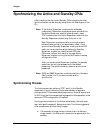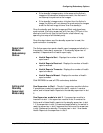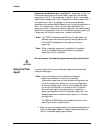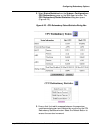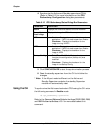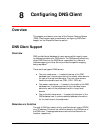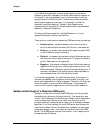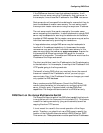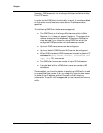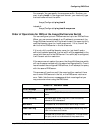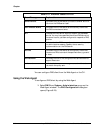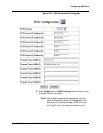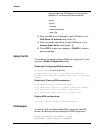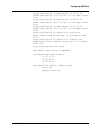
Avaya P550R, P580, P880, and P882 Multiservice Switch User Guide, v5.3.1 8-3
Configuring DNS Client
If the DNS server does not have that address translation, it will
contact the root server using the IP address for that root server. In
this example, it would use the IP address for the .COM root server.
Root servers do not have specific translations for names, but they do
have the database of master name servers. The root server would
the avaya.com master name server using the avaya.com IP address.
The root server would then send a request to the master name
server requesting the translation. In small subdomains, a single DNS
server may be adequate for servicing the subdomain and be able to
translate all DNS requests. So the master name server may act as the
individual name server by providing the translations.
In large subdomains, a single DNS server may be inadequate to
handle all of the address translations. In these cases, the master
name server may point to other individual name servers. In this
case, we are pinging the web server www.avaya.com. Assume for
this example that Avaya has a single DNS server for the entire
subdomain of avaya.com. The avaya.com DNS server would use the
IP address of the Avaya web server.
The client would then insert the IP address into the IP packets going
to the destination. In this example, it would put the IP address in the
HTTP packet going to the Avaya web site.
The benefit of using DNS is that you need only know the name of
the server instead of the IP address for which you are trying to
communicate. Also, if the IP address of the server changes, you need
only update the DNS database.
Many vendors provide DNS servers. Consult the DNS Server
vendor’s documentation for information on configuring the DNS
server. Virtually every IP protocol stack includes DNS client
capabilities. The Avaya multiservice switch is a DNS client only.
DNS Client on the Avaya Multiservice Switch
The Avaya Multiservice switch has DNS client capabilities that work
in conjunction with the Command Line Interface (CLI). This feature
is useful for testing connectivity (ping and traceroute) as well as
copying files from TFTP servers.
It is not meant for use with the normal operation of the Avaya
switch. Therefore, you should not use a DNS name to specify the
location of the Avaya Multiservice switch’s RADIUS server, SNTP
Time server, etc. These parameters must be specified as IP addresses.




